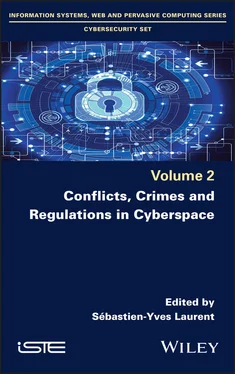70 63
71 64
72 65
73 66
74 67
75 68
76 69
77 70
78 71
79 72
80 73
81 74
82 75
83 76
84 77
85 78
86 79
87 80
88 81
89 82
90 83
91 84
92 85
93 86
94 87
95 88
96 89
97 90
98 91
99 92
100 93
101 94
102 95
103 96
104 97
105 98
106 99
107 100
108 101
109 102
110 103
111 104
112 105
113 107
114 108
115 109
116 110
117 111
118 112
119 113
120 114
121 115
122 116
123 117
124 118
125 119
126 120
127 121
128 122
129 123
130 124
131 125
132 126
133 127
134 128
135 129
136 130
137 131
138 132
139 133
140 134
141 135
142 136
143 137
144 138
145 139
146 140
147 141
148 142
149 143
150 144
151 145
152 146
153 147
154 148
155 149
156 150
157 151
158 152
159 153
160 154
161 155
162 156
163 157
164 158
165 159
166 160
167 161
168 162
169 163
170 164
171 165
172 166
173 167
174 168
175 169
176 170
177 171
178 172
179 173
180 174
181 175
182 176
183 177
184 178
185 179
186 180
187 181
188 182
189 183
190 184
191 185
192 186
193 187
194 188
195 189
196 190
197 191
198 192
199 193
200 194
201 195
202 196
203 197
204 199
205 201
206 202
207 203
208 205
209 206
210 207
211 208
212 209
213 210
214 211
215 212
216 213
217 214
218 215
219 216
Cybersecurity Set
coordinated by
Daniel Ventre
Volume 2
Conflicts, Crimes and Regulations in Cyberspace
Edited by
Sébastien-Yves Laurent

First published 2021 in Great Britain and the United States by ISTE Ltd and John Wiley & Sons, Inc.
Apart from any fair dealing for the purposes of research or private study, or criticism or review, as permitted under the Copyright, Designs and Patents Act 1988, this publication may only be reproduced, stored or transmitted, in any form or by any means, with the prior permission in writing of the publishers, or in the case of reprographic reproduction in accordance with the terms and licenses issued by the CLA. Enquiries concerning reproduction outside these terms should be sent to the publishers at the undermentioned address:
ISTE Ltd
27-37 St George’s Road
London SW19 4EU
UK
www.iste.co.uk
John Wiley & Sons, Inc.
111 River Street
Hoboken, NJ 07030
USA
www.wiley.com
© ISTE Ltd 2021
The rights of Sébastien-Yves Laurent to be identified as the author of this work have been asserted by him in accordance with the Copyright, Designs and Patents Act 1988.
Library of Congress Control Number: 2021945731
British Library Cataloguing-in-Publication Data
A CIP record for this book is available from the British Library
ISBN 978-1-78630-686-9
Introduction
Studying Cyberspace Internationally
Why is it necessary to perceive cyberspace from a reflexive point of view? Since it is not a natural or social reality, but a shared system built over time by a multitude of actors, its hybrid nature – it possesses both a technological and a social aspect – does not enable us to use the usual benchmarks that social sciences use to study the social world. Moreover, cyberspace actors are talkative and doctrinaire and produce a host of fairly new strategic concepts (often of little value) that obscure the understanding of the situation 1 . The effort to be reflexive seems all the more necessary. Understanding cyber therefore presumes an approach that takes into account its social and technological dimensions, as well as an ability to distance oneself from the various discourses of the actors, both indispensable conditions in order to make it an authentic object of study. The challenge of this book is specifically to try to contribute to this essential reflection, which is still in its infancy 2 , and so we must therefore state for the reader the choices and perspectives that guide it.
The nine chapters of this volume provide a global and, therefore, original dimension of cyberspace. Indeed, it seemed to us to be beneficial to not limit its content, as is sometimes the case, to an irenic vision that only values the collaborative dimension or, conversely, to a cynical vision that reduces cyberspace to a conflictual space. In the spirit of our global perspective, we chose the title Conflicts, Crimes and Regulations in Cyberspace . This book is not directly part of the endless debate between the advocates of cyberwar (Calvo 2014) and those who reject this posture (Gartzke 2013). We note that there are confrontations in cyberspace, involving civilian and military actors, toward various ends that are not always short term. Today, the state of our knowledge strongly exceeds the apocalyptic prognoses of the 1990s and 2000s and this allows us to relativize the quantity and scope of confrontations between state actors, most of which are related to data theft activities, that is espionage (Valeriano and Maness 2018). Thus, we have chosen to describe them as “crimes” or “conflicts” in order to deliberately avoid the term “war” 3 , which seems excessive to us and immediately produces a securitization effect.
The 10 authors, whom we thank warmly 4 for their contributions, were each asked to provide a clear definition of what they meant by cyberspace in their text. This is, of course, important since, in this field, diversity prevails; thus, in 2018, the NATO Cooperative Cyber Defense Center of Excellence (CCD COE) in Tallinn identified 29 definitions of cyberspace (Bigelow 2018). We have chosen to adopt the 2006 US definition from the National Military Strategy for Cyberspace Operations since it seems neutral: “[...] an operational domain characterized by the use of electronics and the electromagnetic spectrum to create, store, modify and exchange information via networked information systems and associated physical infrastructures” 5 . The authors gathered here, whether jurists or political scientists, also adhere to the perspective of studying the cyberspace object as a sociotechnical system, that is to say, as a set of social units in dynamic interactions, organized around information and communication technologies, which orientates toward science and technology studies (STS) 6 .
Finally, this book is clearly part of an internationalist perspective 7 , since its authors believe that the study of cyberspace cannot be confined to the limits of a single country, due to the distributed nature of the system structuring cyberspace and the constant mobility of data. This observation does not, however, invalidate the possibility of studying public cyber policies (see Chapter 2). Adopting this international approach, we make it clear that we will not revisit the theoretical debate on whether cyberspace is a component of the international system or whether it constitutes its own autonomous system 8 . In the research paradigm that we have described, we here highlight international cyberspace issues (see Chapters 1and 8) as well as two countries, the United States (see Chapters 1, 2, 6and 9) and France (see Chapters 3, 5and 8). The diversity of cyber actors – state, non-state and individual – is evoked in every chapter of the book, but the chosen approach highlights the first two.
Читать дальше












